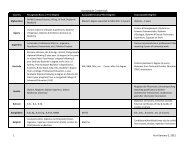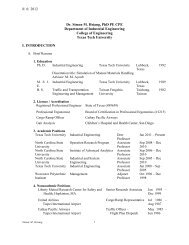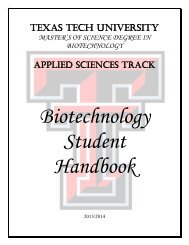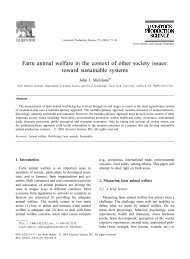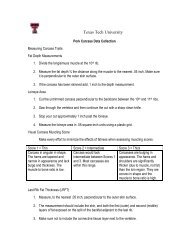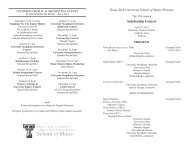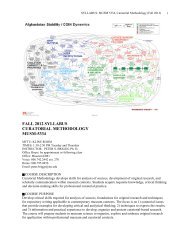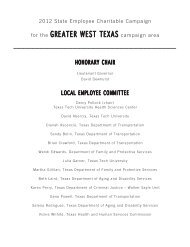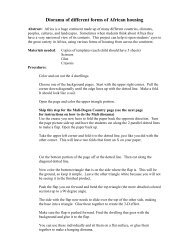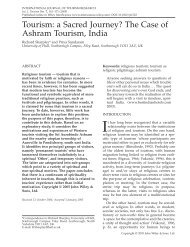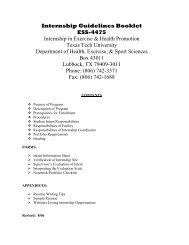Development of Tour Uriely 2005
Development of Tour Uriely 2005
Development of Tour Uriely 2005
Create successful ePaper yourself
Turn your PDF publications into a flip-book with our unique Google optimized e-Paper software.
NATAN URIELY 203<br />
works to de-differentiate the experience from everyday life and to stress<br />
its pluralized nature, respectively. The third involves the growing attention<br />
that is given to the role <strong>of</strong> subjectivity in the constitution <strong>of</strong> the<br />
tourist experience. The fourth concerns the shift toward a compromising<br />
academic discourse, in which the tourist experience is conceptualized<br />
in terms <strong>of</strong> relative rather than absolute truths.<br />
De-differentiating the Experience. Early conceptualizations <strong>of</strong> the tourist<br />
experience emphasize its distinctiveness from everyday life. For example,<br />
Cohen (1972, 1979) refers to the quest for strangeness and novelty<br />
as a key element and argues that. . . ‘‘tourism is essentially a temporary<br />
reversal <strong>of</strong> everyday activities-it is a no-work, no-care, no-thrift situation’’<br />
(1979:181). Similarly, Smith defines the tourist as. . . ‘‘a temporarily<br />
leisured person who visits a place away from home for the<br />
purpose <strong>of</strong> experiencing change’’ (1978:1). The notion <strong>of</strong> this experience<br />
as contrary to the routine <strong>of</strong> everyday-life is also stressed in<br />
MacCannell’s portrayal <strong>of</strong> tourism as a modern form <strong>of</strong> the essentially<br />
religious quest for authenticity. In this regard, MacCannell argues that<br />
while modern individuals perceive their everyday life as inauthentic,<br />
‘‘authentic experiences are believed to be available only to those moderns<br />
who try to break the bonds <strong>of</strong> their everyday experiences and begin<br />
to live’’ (1973:159). The differentiation between everyday life and<br />
tourist experience was also highlighted by Turner and Ash (1975) who<br />
suggested that the temporary distance <strong>of</strong> tourists from their regular<br />
environments allows them to suspend the power <strong>of</strong> norms and values<br />
that govern their daily lives and to think about their own lives and societies<br />
from a different perspective.<br />
The notion <strong>of</strong> the tourist experience as disparate from the routine<br />
<strong>of</strong> everyday life has been challenged since the 90s by scholars who<br />
introduced the perspective <strong>of</strong> postmodern tourism (Lash and Urry<br />
1994; Munt 1994; Urry 1990). The premise suggests that while the<br />
modern era is characterized by processes <strong>of</strong> differentiation among<br />
normative, aesthetic, and institutional spheres <strong>of</strong> social activity, the<br />
postmodern condition involves processes <strong>of</strong> de-differentiation that<br />
blur these distinctions. In this context, Lash and Urry (1994) conceptualize<br />
the decreasing distinctions between everyday life and tourist<br />
experiences as ‘‘the end <strong>of</strong> tourism’’. Specifically, they argue that<br />
experiences that were once confined to tourism—including the enjoyment<br />
<strong>of</strong> gazing at distant sights and the pleasure <strong>of</strong> engaging in aspects<br />
<strong>of</strong> other cultures—are currently accessible in various contexts<br />
<strong>of</strong> everyday life. In the era <strong>of</strong> mass media, for instance, attractions<br />
can be enjoyed via video and virtual reality displays within the comforts<br />
<strong>of</strong> one’s home. Similarly, the proliferation <strong>of</strong> simulated environments<br />
might bring together multiple sites and sights from around the world<br />
in one’s nearby theme park or shopping mall. Accordingly, many tourist-related<br />
experiences are currently reachable without the necessity<br />
for travel to separate destinations. Consequently, Lash and Urry<br />
(1994) indicated a process through which people become tourists<br />
most <strong>of</strong> the time, whether they are taking a vacation or conducting<br />
daily activities.



